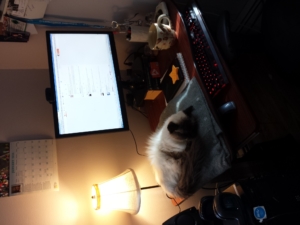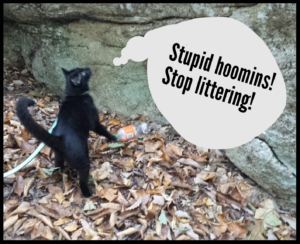NATIONAL NOVEL WRITING MONTH:
Yoga for Creativity – Part Three
Karma Yoga, Ahimsa, Saucha, Tapas
AMBER LOVE 22-NOV-2017 Posts like this are first read by the generous supporters at Patreon.com/amberunmasked. Consider adding to my tip jar so I can afford things like paying my car insurance and website expenses. I’m an #AmazonInfluencer and Affiliate too so if you purchase through my links, that modestly helps.
[amazon_link asins=’B075NM716J,B01AV44VR2,B01M5E1QWH,0998061514′ template=’ProductCarousel’ store=’amberunmasked-20′ marketplace=’US’ link_id=’5d6ee7ef-bd97-11e7-811f-4dd1f67f6f51′]
Ahimsa
Yoga is a robust way of life and tenet system. Ahimsa is one of the core values. It means “non-harming” or “non-violence” which requires people on the yogic path to have compassion for themselves and others. It’s one of the five yamas which is the name for yogi ethical guidelines.
“To understand how non-violence can manifest in our lives each day, we must first learn how subtle daily actions and responses contain elements of violence. This often happens against ourselves. When our thoughts contain negative responses like disappointment, resentment, or guilt, when we feel shame, we are subtly creating violence. If you can’t forgive someone for something they’ve done against you, or if you can’t forgive yourself for something you’ve done, this is an act of violence because it pushes love away.” – “How to Practice Ahimsa in Everyday Life.†Gaia, 1 June 2016.
In today’s political climate, it’s hard to convince some people that “violence” can be subtle. They probably think it has to be severe damage to the physical body when that’s not all that violence is. Blood, guts, and gore. That’s what makes for interesting ten o’clock news. We’re desensitized to the extreme version of violence so much that it’s hard to recognize the subtle versions of violence.
Compassion isn’t limited in scope either. In America it is driven into us that we must be “more than” we are. You must spend more time on work; more time with your family; more time with your passion; give more to your community; spend more on consumerist life. More. More. More.
Even when it’s something wonderful like time on your passions — let’s say writing or creating art — people are often frozen by damaging thoughts about their work. It may be a symptom of something medical like Major Depressive Disorder; or it may be Impostor Syndrome. To put it bluntly, maybe you think you suck as an artist. Those damaging thoughts are violence against yourself.
Incorporating the Yamas & Niyamas
On Tuesday, November 21st, I reached a significant milestone for Bear Roots, my NaNoWriMo project. I was finally three-quarters through my rough draft word count (of the 50,000 word target). I did a yoga asana practice at 7AM for about 45 minutes. Went through my morning routine and was writing by a little after 9AM. My plan was to take Gus for his adventure as soon as I finished lunch. At 12:37 we were geared up and out the door.
One of my writing pals, Neliza DrewVodka O'Clock 1701 (All the Bridges Burning), is inspiring when it comes to showing compassion to the environment. She is frequently outdoors on the trails of Florida or in warm springs or camping. I noticed how often her pictures will show her picking up other people’s litter. Every time I spotted litter on my walks with Gus either through our neighbor’s trails or at the state parks, I would tell myself, “Next time I’ll bring a bag and do something about that.”
After telling myself that many times, on Tuesday I finally remembered. I have a special purse with a steampunk black cat on it that I call my Gus Bag. It has bug spray, gloves, garden snips, and sometimes extra things like winter gloves or my phone. Anyway, I shoved a grocery bag in it with my regular stuff and got Gus harnessed. The bag was overflowing after an hour exploring our trails. This doesn’t even take into account huge things we find like tarps, tires, or barrels that I can’t fit in a little grocery bag.
As I was picking up trash, I wondered which of the yamas or nimayas of yoga would apply. There are probably a few. Ahimsa is non-harming and so if removing harm from the Earth is the opposite, I figured that would make sense. There’s also saucha, one of the niyamas, which is about cleansing: the body, the mind, our space, or our planet.
“Our environment often reflects our state of mind. You’ll probably identify with the fact that when your bedroom or home is messy, your mind can often feel a little messy and cluttered too. When we’re surrounded by a clean environment however, with clear surfaces, possessions that we need – and not possessions we’ve hoarded over the years and can’t bear to get rid of – and the sense of having space to breathe, then we’re likely to feel a whole lot better and clearer in our minds.” — Newlyn, Emma. “The Niyamas – Bringing Saucha into Your Life.†Ekhart Yoga, 12 Aug. 2014.
I know several creators who post photos of their workspaces or studios. I love to be inspired by all types: serene designated lofts for writing; utilization of a tiny corner that barely fits a computer; neat and tidy collections of pens and notebooks. Some folks are fortunate enough to have writing sheds on their property which are great for giving you that mental and physical separation telling you, “hey, you’re here to do this thing you committed to do.” That kind of commitment falls under the self-discipline niyama called tapas; while the cleanliness and order of the space is part of saucha.

Karma Yoga & Seva
Plus as you’ve probably guessed, a word you’re more familiar with, karma plays a role here too. Karmic yoga is another branch of the yoga life that isn’t about postures. The word for service in yoga is seva and often comes up when there are expectations for yoga instructors and educators to work for free. Though many people embrace the opportunities for volunteering, it doesn’t mean our own life expenses and continuing education expenses magically disappear because we volunteered. Organizations must balance the requests for unpaid seva and compensated work; either way people are giving their energies, time, and experience. Karma Yoga teaches us not to expect anything in return. That’s when you perform a good deed for the sake of doing the work; no kudos, accolades, or pay.
“Karma Yoga is the path of ‘action’, of putting in 100 percent effort, without being attached to the outcome. Karma yoga can be applied to everything you do: from the most trivial, ordinary tasks to greater, more challenging works. When action is performed selflessly, with full focus and attention, it brings fulfillment and freedom. Acting without being attached to the fruits of one’s deeds – this alone can lead to union with the Self, which is the goal of yoga.” – “Karma Yoga.†Art of Living (United States).
I hope you see how all these different elements of yoga tie into your creative life even far beyond stretching tight muscles from being at a desk for too long. Get up from the desk and create order from the chaos. Clean up your coffee cups. Wipe off the surfaces. Spray your disgusting keyboard (admit it, you know it is).
Below is a one-minute sample of the sounds of my singing bowl. One minute isn’t enough time to meditate, but it’s enough time to take a few long, deep breaths.






5 Comments on NaNoWriMo2017: Yoga & Creativity part three – Non-Asana Yoga
Comments are closed.